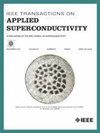A Broadband Mechanically Tuned Superconducting Cavity Design Suitable for the Fermilab Main Injector
IF 1.7
3区 物理与天体物理
Q3 ENGINEERING, ELECTRICAL & ELECTRONIC
引用次数: 0
Abstract
Radio Frequency superconductivity has been a mainstay of accelerator science for decades. However, its benefits have yet to be applied to proton synchrotrons with demanding tuning requirements. For example, the Main Injector (MI), Fermilab's high-energy proton synchrotron, currently utilizes 20+ ferrite-loaded cavities for a targeted 1.2 s acceleration cycle. Harnessing the extremely high gradients associated with superconductivity, the required number of cavities could be reduced by an order of magnitude, dramatically lowering operational power requirements even with cryogenic considerations. Additionally, the current plans for the Fermilab accelerator complex evolution initiative involve almost doubling the number of cavities in MI if the same designs are to be used, further highlighting the potential benefits of superconductivity. These advantages are attractive, but to date, no tunable superconducting cavity suitable for MI has been proposed due to the incompatibility of conventional broadband tuning methods with superconductivity. Here, we present a tunable superconducting cavity concept capable of record-breaking performance. Tuning will be accomplished by using high-speed linear actuators to vary the insertion depth of metallic plungers into the cavity volume. This tuning concept is theoretically viable with currently available technology and will be fully compatible with a superconducting cavity.适合费米实验室主注入器的宽带机械调谐超导腔体设计
几十年来,射频超导一直是加速器科学的支柱。然而,它的优势尚未应用于对调谐要求苛刻的质子同步加速器。例如,费米实验室的高能质子同步加速器 "主注入器"(MI)目前使用 20 多个铁氧体空腔来实现 1.2 秒的目标加速周期。利用与超导相关的极高梯度,所需的空腔数量可以减少一个数量级,即使考虑到低温因素,也能显著降低运行功率要求。此外,费米实验室加速器综合体进化计划的当前计划涉及,如果使用相同的设计,MI 中的空腔数量将增加几乎一倍,这进一步凸显了超导的潜在优势。这些优势非常吸引人,但由于传统的宽带调谐方法与超导不兼容,迄今为止还没有提出适合 MI 的可调谐超导腔。在这里,我们提出了一种可调谐超导腔概念,它能够实现破纪录的性能。调谐将通过使用高速线性致动器来改变金属柱塞插入腔体的深度来实现。这种调谐概念在理论上是可行的,目前已有的技术也可以实现,而且与超导腔完全兼容。
本文章由计算机程序翻译,如有差异,请以英文原文为准。
求助全文
约1分钟内获得全文
求助全文
来源期刊

IEEE Transactions on Applied Superconductivity
工程技术-工程:电子与电气
CiteScore
3.50
自引率
33.30%
发文量
650
审稿时长
2.3 months
期刊介绍:
IEEE Transactions on Applied Superconductivity (TAS) contains articles on the applications of superconductivity and other relevant technology. Electronic applications include analog and digital circuits employing thin films and active devices such as Josephson junctions. Large scale applications include magnets for power applications such as motors and generators, for magnetic resonance, for accelerators, and cable applications such as power transmission.
 求助内容:
求助内容: 应助结果提醒方式:
应助结果提醒方式:


